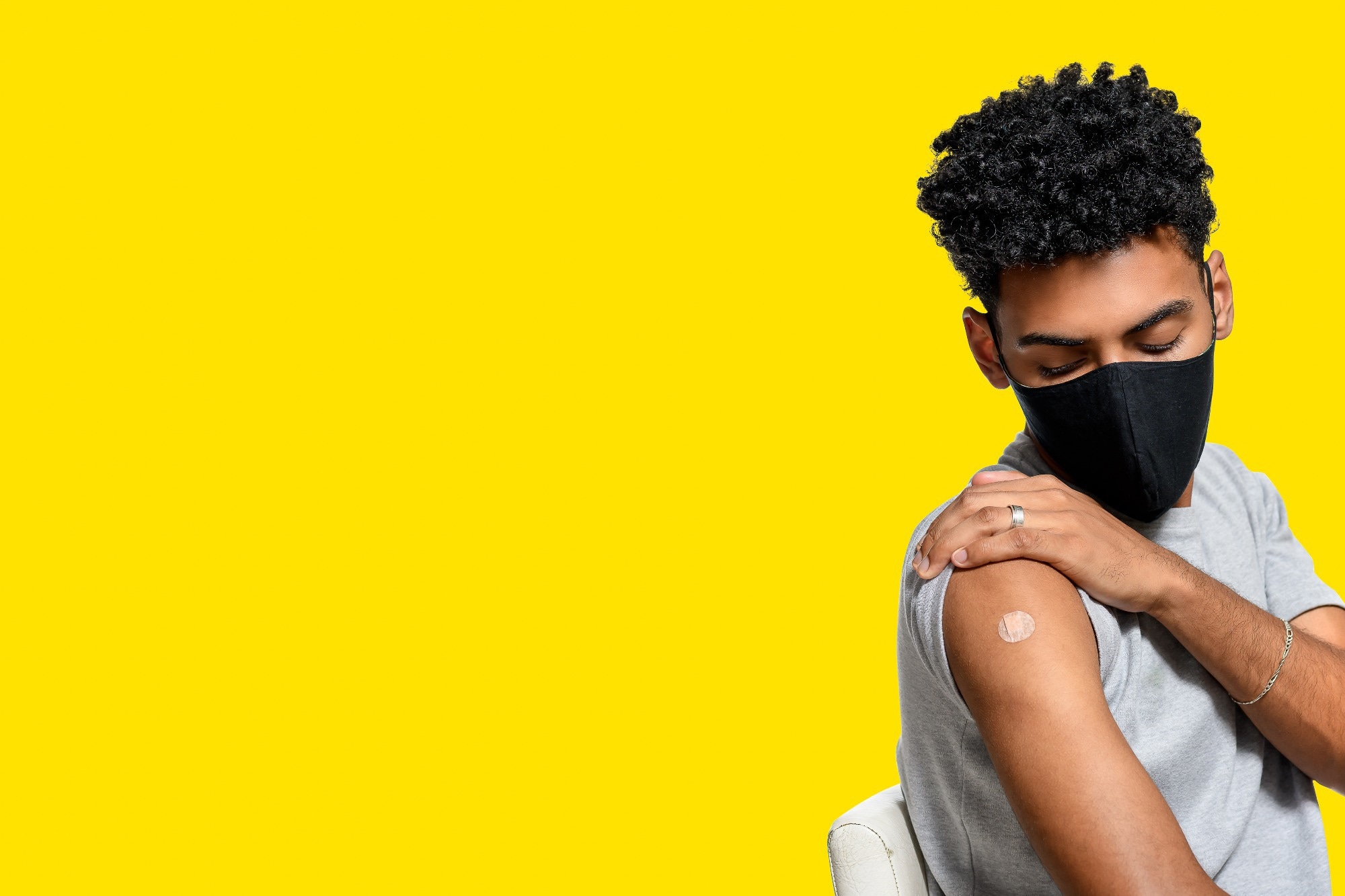In a latest research printed within the journal Pediatrics, researchers evaluated the effectiveness of major BNT162b2, messenger ribonucleic acid (mRNA)-1273, and heterologous messenger ribonucleic acid (mRNA) vaccination schedules amongst adolescents towards coronavirus illness 2019 (COVID-19)-associated hospitalization throughout Sweden, Norway, Finland, and Denmark.
For adolescent people, knowledge on mRNA-1273 and BNT162b2 VE estimates towards extreme acute respiratory syndrome coronavirus 2 (SARS-CoV-2) an infection outcomes over the long run are restricted, particularly with long-term follow-up. Restricted analysis has been carried out on the effectiveness of homologous mRNA-1273 and heterologous messenger RNA vaccinations (i.e., combining mRNA-1273 with BNT162b2).
 Examine: COVID-19 Vaccine Effectiveness Amongst Adolescents. Picture Credit score: EDSON DE SOUZA NASCIMENTO / Shutterstock
Examine: COVID-19 Vaccine Effectiveness Amongst Adolescents. Picture Credit score: EDSON DE SOUZA NASCIMENTO / Shutterstock
In regards to the research
The researchers of the current research evaluated mRNA-1273, BNT162b2, and heterologous messenger RNA VE towards SARS-CoV-2-associated hospitalization at six months in adolescents. Additionally they offered VE estimates for prolonged follow-ups of 1 yr and the SARS-CoV-2 Omicron variant wave.
The researchers carried out nationwide register-based and 1:1 matched country-specific cohorts in Sweden, Norway, Finland, and Denmark between 28 Could 2021 and 30 April 2023 to calculate VE for the first two-dose COVID-19 vaccination schedules amongst people aged between 12 and 17 years. They used the inverse variance methodology to acquire country-specific estimates. The research contributors included adolescents with out prior COVID-19-associated hospitalization, excluding those that acquired COVID-19 vaccinations earlier than the evaluation or have been non-residents of the taking part nations. The SARS-CoV-2 Delta and Omicron strains dominated throughout the evaluation interval.
The first research consequence was SARS-CoV-2-associated hospitalization, together with inpatient hospital contacts, SARS-CoV-2-related prognosis, and a SARS-CoV-2-positive polymerase chain response (PCR) report. Secondary analyses included follow-up extensions to a yr after vaccination, proscribing evaluation to the Omicron wave by stratification by calendar interval, and inspecting VE single dose vaccinees in comparison with unvaccinated people.
Comply with-up commenced two weeks post-index date until the end result, six months after follow-up graduation, emigration, demise, booster doses of COVID-19 vaccines, or the research finish date, whichever occurred first. The crew carried out logistic regressions to calculate propensity scores and estimate the conditional chance of COVID-19 vaccination with specific schedules given comorbidities, residence, intercourse, precedence teams, and prior COVID-19 historical past. The crew carried out random-effects-type meta-analytical analysis, combining nation-specific threat variations (RD) and vaccine effectiveness estimates.
Outcomes
In whole, the analytical pattern included 526,966 two-dose vaccinees and an equal variety of unvaccinated adolescent people. Most of them acquired BNT162b2 (n=419,168), and in Finland, the mRNA-1273 (homologous) and heterologous messenger RNA vaccinations have been extra frequent in comparison with different nations. The imply participant age ranged between 14 and 17 years in all cohorts. Most vaccinations have been offered from July to November 2021. The crew noticed low comorbidity prevalence among the many contributors.
Vaccine effectiveness towards SARS-CoV-2-associated hospitalization was 73%, with a threat distinction of -2.80 amongst each 10,000 BNT162b2 vaccinees at six months in comparison with unvaccinated people. The corresponding vaccine effectiveness and threat distinction values have been 86.0% and -2.10 amongst each 10,000 mRNA-1273 vaccinees and 81.0% and -5.50 amongst each 10,000 heterologous messenger RNA vaccinees.
Throughout all 4 Nordic nations, COVID-19-associated hospitalization was uncommon amongst adolescents at follow-up. Among the many research topics, the variety of COVID-19-associated hospitalizations throughout six months of the follow-up interval from lower than 5 to 37 and eight to 140 amongst vaccinees and non-vaccinees, respectively. At follow-up, the cumulative COVID-19-associated hospitalization charges have been greater among the many unvaccinated. The COVID-19-related hospitalization charges couldn’t be decided for Norway attributable to a scarcity of occasions amongst vaccinated adolescents within the research cohorts.
The six-month country-combined vaccine effectiveness estimates towards laboratory-confirmed SARS-CoV-2 an infection have been 22%, 3.6%, and 28% for BNT162b2, mRNA-1273, and heterologous COVID-19 vaccinations, respectively. VE for one-dose schedules was low. Extending follow-up to day 365 confirmed comparable outcomes; the country-combined vaccine effectiveness estimates towards COVID-19 hospitalizations have been 66% for BNT162b2, 91% for homologous mRNA-1273 vaccinations, and 83% for heterologous vaccinations. Proscribing the analyses to a interval of ο predominance didn’t alter the findings. A low variety of instances influenced effectiveness estimates for one-dose vaccination.
General, the research findings confirmed that the first mRNA vaccination schedules present excessive safety towards adolescent hospitalizations in comparison with unvaccinated people at six months of follow-up throughout Denmark, Finland, Norway, and Sweden. The homologous mRNA-1273 and heterologous vaccinations successfully prevented COVID-19-associated hospitalization, with VE ranging between 73% and 86% at six months. The effectiveness of those vaccines stays constant, extending follow-up to a yr and the SARS-CoV-2 Omicron wave.
